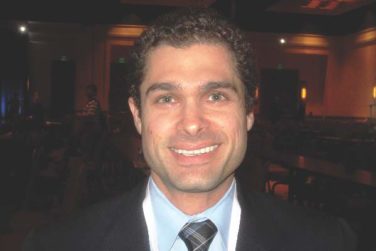Some Supreme Court justices appear skeptical about whether physicians and other health providers have the right to sue states over low Medicaid reimbursement.
During oral arguments Jan. 20 in Armstrong v. Exceptional Child Center Inc., Chief Justice John G. Roberts Jr. questioned whether letting providers challenge state-set payment rates would lead to a wave of litigation and force federal judges to make state budgetary decisions.
“There are dozens of different types of providers under the [Social Security] Act,” Justice Roberts said during oral arguments. “Now, what do you do if each of those providers bring a lawsuit similar to yours? The effect, it seems to me, will be putting the setting of budget priorities in the hands of dozens of different federal judges, and I just don’t know what the practical significance of that’s going to be.”
In Armstrong v. Exceptional Child Center Inc., the high court justices are weighing whether the U.S. Constitution’s Supremacy Clause – which establishes the Constitution and federal law as the law of the land – gives health care providers under Medicaid a private “right of action” to enforce Medicaid funding conditions against states. The case originates from a 2009 lawsuit by Exceptional Child Center Inc., of Twin Falls, Idaho, and four other residential habilitation centers against Richard Armstrong , director of the Idaho Department of Health and Welfare.
The centers claimed the state was violating Medicaid’s equal access provision by refusing to raise its payment rates. Under the equal access provision, states that accept federal Medicaid funding are required to set reimbursement rates at levels sufficient to retain enough providers and make sure patients have proper access to care. The Idaho Department of Health and Welfare and its Medicaid division conducted yearly cost studies between 2006 and 2009, developed a new rate-setting methodology, and recommended substantial increases in reimbursement rates for supported living services, according to court documents. However, the new methodology and rate increases were not enacted for budgetary reasons.
A district court ruled in favor of the centers, and the 9th U.S. Circuit Court of Appeals affirmed the ruling. The state petitioned the Supreme Court to resolve the issue.
During arguments, Idaho deputy attorney general Carl J. Withroe argued the courtroom is an incorrect avenue for Medicaid providers to dispute pay rates. If displeased, physicians and other health providers should issue an administrative challenge to the Centers for Medicare & Medicaid Services over its approval of the state’s Medicaid plan. He noted that such state plans – known as waivers – must be approved by the CMS every 5 years.
But Justice Sonia Sotomayor called this pathway an ineffective remedy.
“Let’s assume inflation is going up constantly. What happens 2 years into the plan when providers can’t work for what the state is giving or the state is imposing a tremendous hardship on them, which is happening to a lot of providers who are being underpaid. Where do they go? … What do they do?”
Other panelists, such as Justice Ruth Bader Ginsberg, expressed doubt that the centers’ case against the state has merit, namely that Idaho is violating Medicaid’s equal access provision.
“According to the district court, all eligible recipients received the services that they needed,” Justice Ginsberg said. “So again, there was no waiting list; nobody’s being kept waiting. These providers, while they say they’re not getting enough, are still providing the service. So where is the [equal access] violation?”
Attorney James M. Piotrowski, who represented the centers, countered that the equal access provision imposes both procedural and substantive requirements. The substantive requirement mandates there must be enough providers to allow access and generate quality care, Mr. Piotrowski said. The procedural requirement entails that the rates be set based upon factors that Congress considers important.
“The violation of [the equal access provision] here was that the state gave no consideration whatsoever to the federal factors,” he said. “They relied only on their own factors.”
The Armstrong case is being closely watched by states, physicians, and patient advocates alike. Twenty-seven states have reached out to the high court in support of Idaho. The states saidthey have been subject to numerous, unwarranted lawsuits because of misguided interpretations of the Supremacy Clause. A number of physician and patient advocacy associations joined a friend-of-the-court brief in support of the centers, including the American Academy of Family Physicians and the American Medical Association. The AMA and other organizations said ongoing violations of Medicaid’s equal access provision by states continue to drive doctors from the program and harm access to care.
A decision by the high court is expected by June.
On Twitter @legal_med




